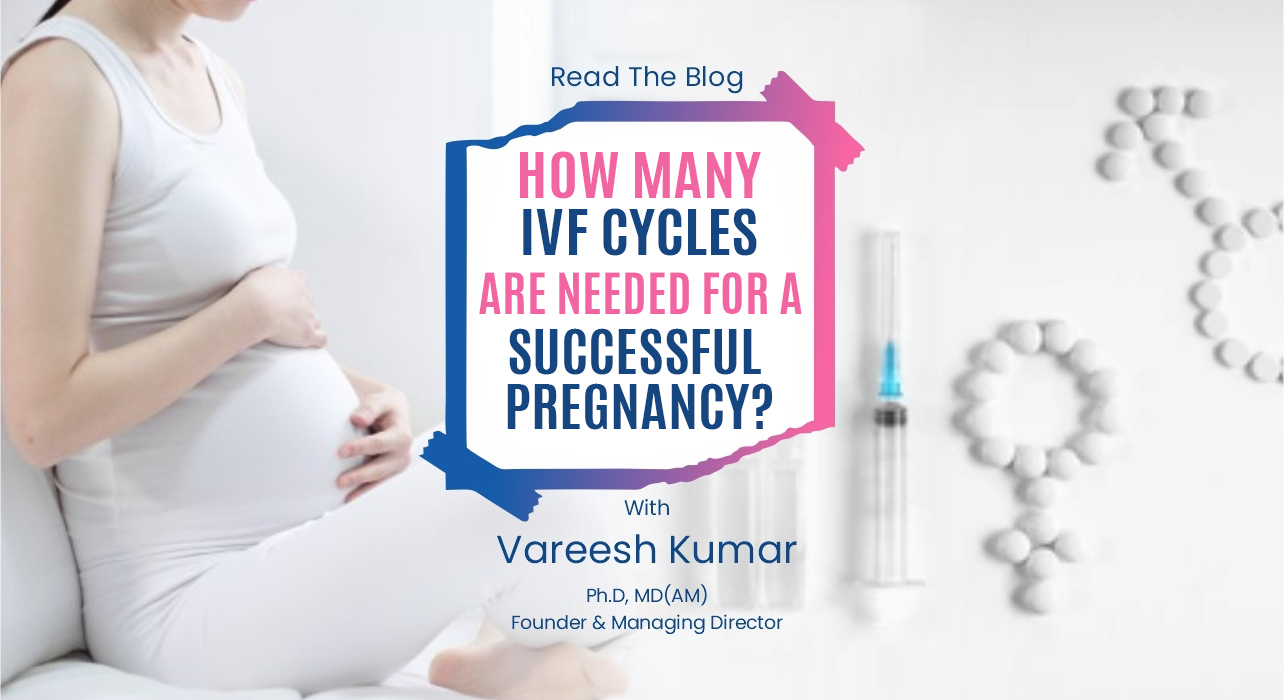Today In Vitro Fertilization [ IVF] is a miracle for any couple who has been planning to conceive for a long time. While successful IVF cycles have fulfilled the parental dream of many couples, a failed cycle can have a devastating effect as well. Therefore, you may encounter the crucial question, i.e., the number of IVF cycles needed for a successful pregnancy.
But the answer to this question can never be an absolute number as IVF is an individualized treatment method. Before going for IVF treatment, you should know how this treatment works and who can go for this treatment?
How does IVF work?
IVF process involves combining eggs and sperm outside the body in a laboratory. Once an embryo is formed, they are then placed in the uterus.
When it comes to infertility, IVF can be a good option if you or your partner have been diagnosed with:
- Endometriosis
- Low sperm count
- Fallopian tube blockage
- Poor egg quality
- The genetic disease of mother or father
- Unexplained fertility problem
Therefore, if you are struggling with any of these issues, you can go for an IVF treatment. While many couples can conceive within a few months of trying, others may have more difficulty getting pregnant.
But the success rate of an IVF cycle varies from person to person. Moreover, the likelihood that an IVF cycle will result in pregnancy depends on several factors, which includes:
- Age
The patient’s age is essential in determining the success rate of IVF. Both the quality and quantity of eggs can go down or decline with age. When you get older, ovaries are less likely to respond well to hormone-stimulating drugs.
- Duration of Infertility
The duration of your infertility is closely linked with the increasing age of a woman. The way out, in this case, can be egg donation.
- Type of Fertility Problem
In certain conditions, the success rate is not so good. Conditions like uterine abnormalities, fibroids, fallopian tube blockage can affect IVF success rate negatively.
- Dual Infertility Factors
There are certain cases where both husband and wife have infertility factors. These factors can lower the chances of your IVF success
Moreover, other factors like body weight, smoking, drinking can also influence the chances of your IVF cycle success rate. Certain studies show that most women see a success rate of 20-35% per cycle. However, the chances of conceiving fall with the number of unsuccessful cycles you have.
There is no particular answer to how many cycles you need for a successful IVF procedure. As it depends on all the above-mentioned factors.
For most women, one cycle of IVF takes between four and six weeks. Before the treatment starts, you may be offered oral contraceptive pills or fertility drugs. After that, your IVF process starts. Generally, the IVF process involves these significant steps.
Step 1: Testing and ovarian stimulation
Before the start of an IVF treatment, you will have an evaluation of your uterus and fallopian tubes. Pre-cycle testing involves hormonal evaluation to assess thyroid function, screening both partners for sexually transmitted diseases and semen analysis of males.
Ovarian stimulation is used to mature eggs for the retrieval process. On average, 10-20 eggs are retrieved for IVF. In addition, fertility drugs are injected, and you will be monitored through hormonal testing and vaginal ultrasound.
Step 2: Egg retrieval
Thirty-four to thirty-six hours after receiving a trigger shot or before egg ovulation, you will undergo a surgical procedure to remove eggs from follicles in your ovaries. The process can take up to 30 minutes.
Moreover, you may feel heaviness or pressure due to extended ovaries from ovarian stimulation. The physician then suctions the fluid through small tubing and into a test tube.
Step 3: Fertilization
Experts examine the eggs and are placed in an incubator, and are fertilized with sperms within a few hours of egg retrieval. Eggs can either be fertilized through conventional insemination or Intra-cytoplasmic injection [ ICSI].
STEP 4: Embryo transfer
After fertilization, IVF couple and couple will determine as and when the embryo transfer will take place. It can take place between 1-6 days or 3-5 days of egg retrieval.
The embryos are frozen and remain in the IVF lab. After receiving genetic test results, the selected embryo is transferred into the uterus, usually within 1 to 2 months after egg retrieval.
Step 5: Pregnancy test
Once the embryos have been transferred, you need to wait for two weeks before having a pregnancy test. You can have a test at home or a clinic. If you do become pregnant, you will have some ultrasound scans over the following week to check if things are progressing properly.
As the success rate of an IVF is not limited to one cycle. Women who don’t get pregnant in the first cycle have excellent chances of getting pregnant in the second, third, and even more IVF cycles. However, the success rate may vary, so you should not lose hope during your IVF journey.
Vardaan Medical Centre: For Best IVF Treatment
At Vardaan Medical Centre, you can get the best infertility treatment from an experienced and well-qualified team of doctors. We are equipped with advanced reproductive techniques. Our IVF specialists have years of experience in handling complex infertility cases.
Book an appointment with our team. The road to parenthood is not easy, but our fertility specialists will guide you throughout the journey.


